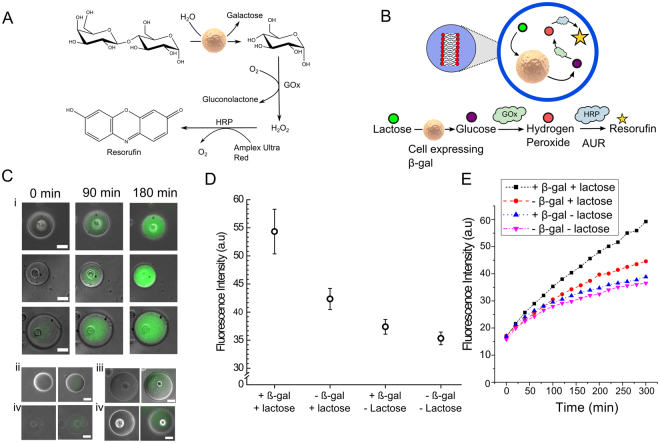Figure 5.
Encapsulated cell as an organelle-like bioreactor. (A) Reaction scheme (B) Vesicle/cell hybrids were engineered where encapsulated cells performed one step of a multi-step enzymatic pathway (hydrolysis of lactose to glucose). Glucose was then further metabolised in the vesicle interior by an artificial enzymatic cascade, resulting in a fluorescent product (resorufin). (C) (i) Representative brightfield/fluorescence composite images of vesicles/cell hybrids at different time points, showing successful synthesis of reaction products over time compared to control experiments (ii) with no encapsulated cell, which exhibited minimal fluorescence after 180 minutes. Scale bar = 25 µm. (D) Graph demonstrating mean fluorescence of vesicle/cell hybrids with a transfected cell and encapsulated feedstocks 180 minutes after generation, as well as three control scenarios. Error bars represent standard deviations of mean fluorescence after 180 minutes from three independent preparation runs (E) Kinetics trace of bulk fluorescent levels after three hours of the cascade reaction. The presence of transfected cells significantly increased reaction yield, confirming the successful coupling of the cellular pathway to the artificially added elements in the cascade.

